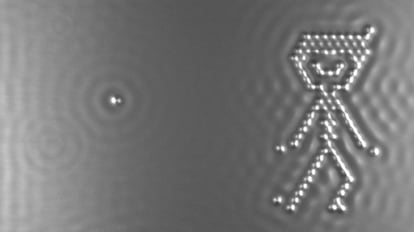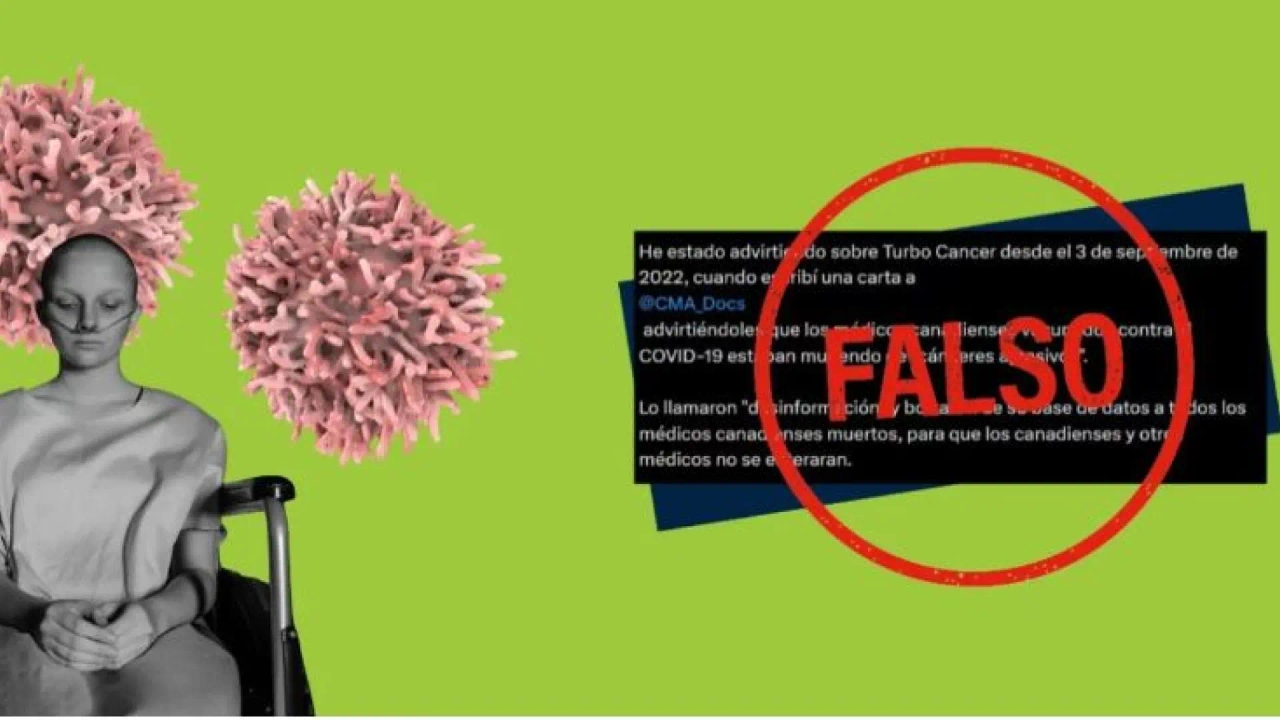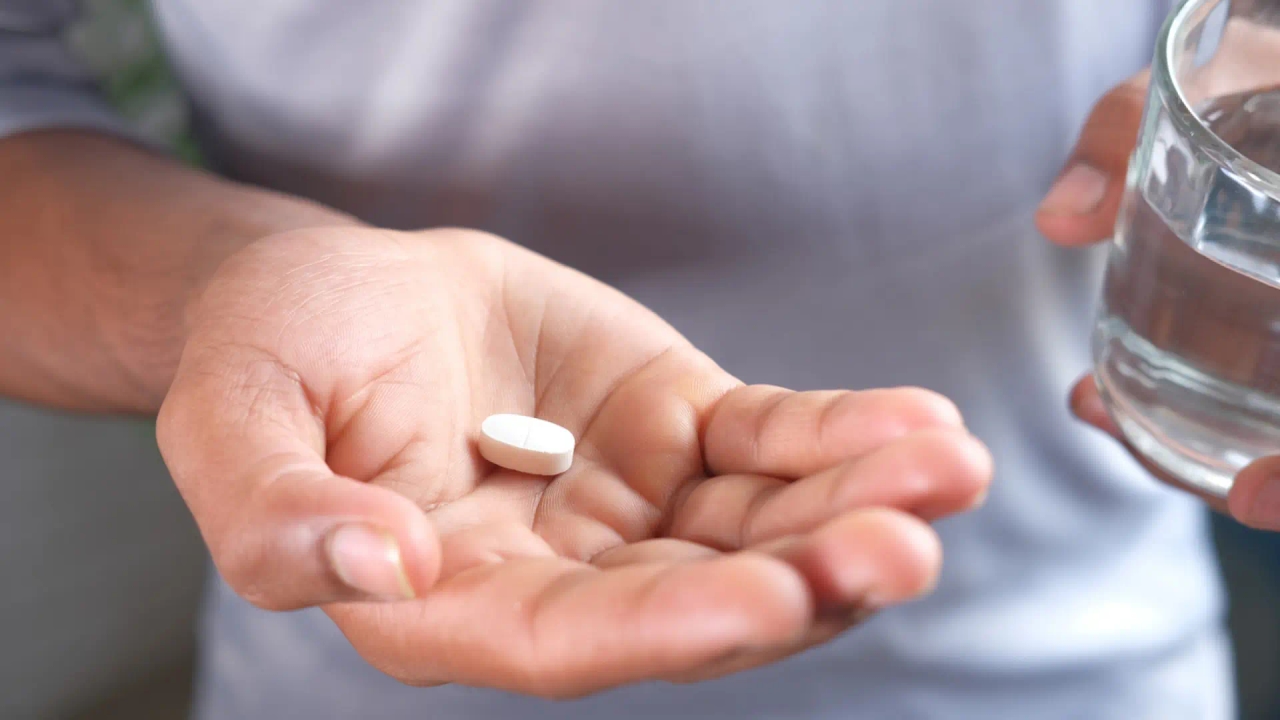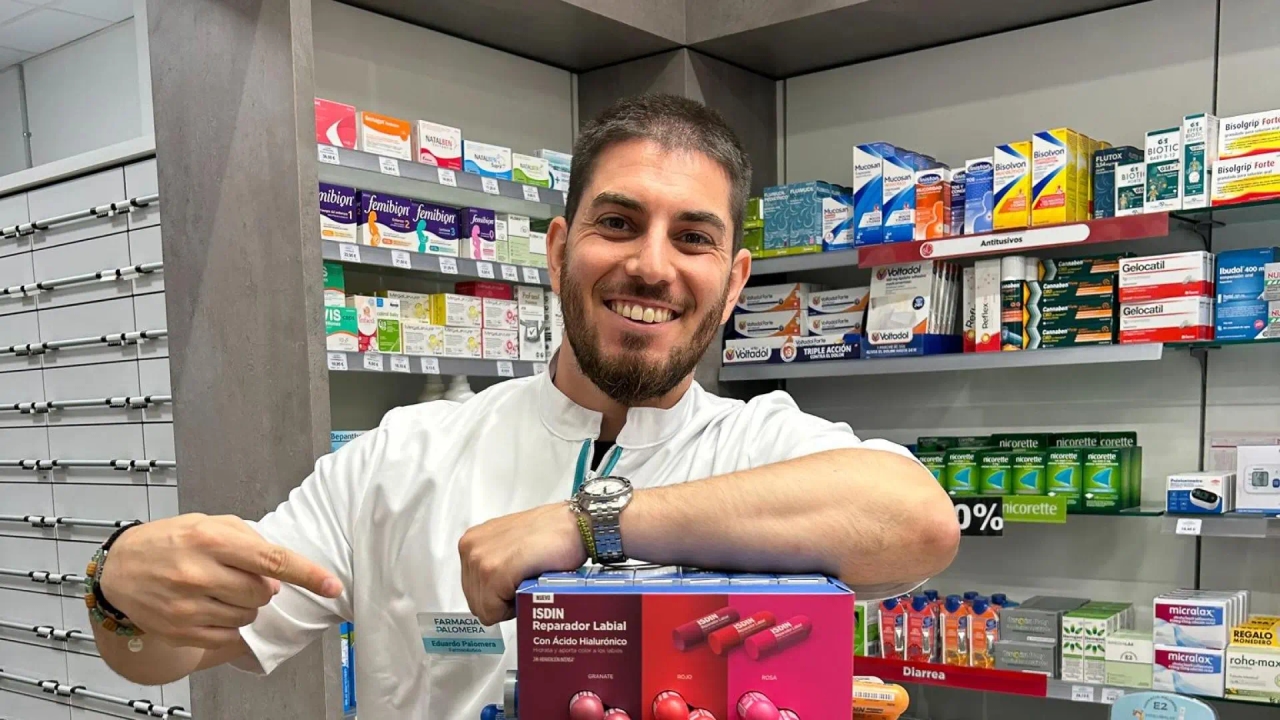Why doesn't water escape from a glass between the atoms of the glass, which are theoretically hollow?

In practice, atoms are not almost empty: around the nucleus, there is a probability of the presence of one or more electrons, which create a quantum electromagnetic field that acts as a barrier.

This question has a problem because, in its formulation, it seems to consider the atoms of crystal to be empty, but not those of water. That is, it makes a distinction between atoms depending on whether they are solid matter (crystal) or liquid matter (water). And, in reality, we cannot make that distinction: all atoms of matter have the same basic characteristics, even though the different substances that make up those atoms have different properties: water as a liquid can deform, while crystal as a solid cannot.
But that said, the interesting question is whether atoms are empty or not. And the answer is that they aren't exactly empty because there's a probability of the presence of one or more electrons around the nucleus of each atom. And those electrons create a quantum electromagnetic field. This electromagnetic field is responsible for the repulsions or attractions between atoms, which means that there are barriers between them, including those in water, because they exist in all types of matter. To answer why water doesn't escape from the glass that contains it, I have to refer to those electrons in the atoms and the repulsions and attractions between them.
So, to begin with, the state of atoms cannot be interpreted as empty due to the presence of those electrons that create quantum electromagnetic fields . This means that if an electron in a water atom wants to position itself where the electrons in the glass are, it can't do so. This is the Pauli solution, or Pauli exclusion principle, which tells us that there is a fixed number of electrons in each energy state; you can't have all the electrons you want wherever you want.
From the perspective of classical physics, we have that repulsion and attraction. We already know that particles with the same charge repel each other, and those with different charges attract each other. Since electrons all have a negative charge, they repel each other; but they attract positively charged particles. Water sticks to glass, but it also holds together, and that's due to these repulsions and attractions. It happens like during adolescence, when girls and boys become attached to their home and family, but they also begin to feel attached to the outside world and their groups of friends.
But we also have to take into account the quantum physics that works with microscopic systems , which tells us that you can't have two electrons in the same state. So, if the crystal atom already has its electron positions fully filled, a water atom can't enter, and that prevents water atoms from passing through the crystal.
Ruth Lazkoz holds a PhD in physics and is a professor at the University of the Basque Country.
Coordination and writing: Victoria Toro .
Question sent via email by Carlos Miguel Vega Gómez .
Scientists Respond is a weekly science consultation, sponsored by the L'Oréal-Unesco 'For Women in Science' program and Bristol Myers Squibb , which answers readers' questions about science and technology. The scientists and technologists, members of AMIT (Association of Women Researchers and Technologists), are the ones who answer these questions. Send your questions to [email protected] or via X #nosotrasrespondemos.
Do you want to add another user to your subscription?
If you continue reading on this device, it will not be possible to read it on the other device.
ArrowIf you want to share your account, upgrade to Premium, so you can add another user. Each user will log in with their own email address, allowing you to personalize your experience with EL PAÍS.
Do you have a business subscription? Click here to purchase more accounts.
If you don't know who's using your account, we recommend changing your password here.
If you decide to continue sharing your account, this message will be displayed indefinitely on your device and the device of the other person using your account, affecting your reading experience. You can view the terms and conditions of the digital subscription here.
EL PAÍS





